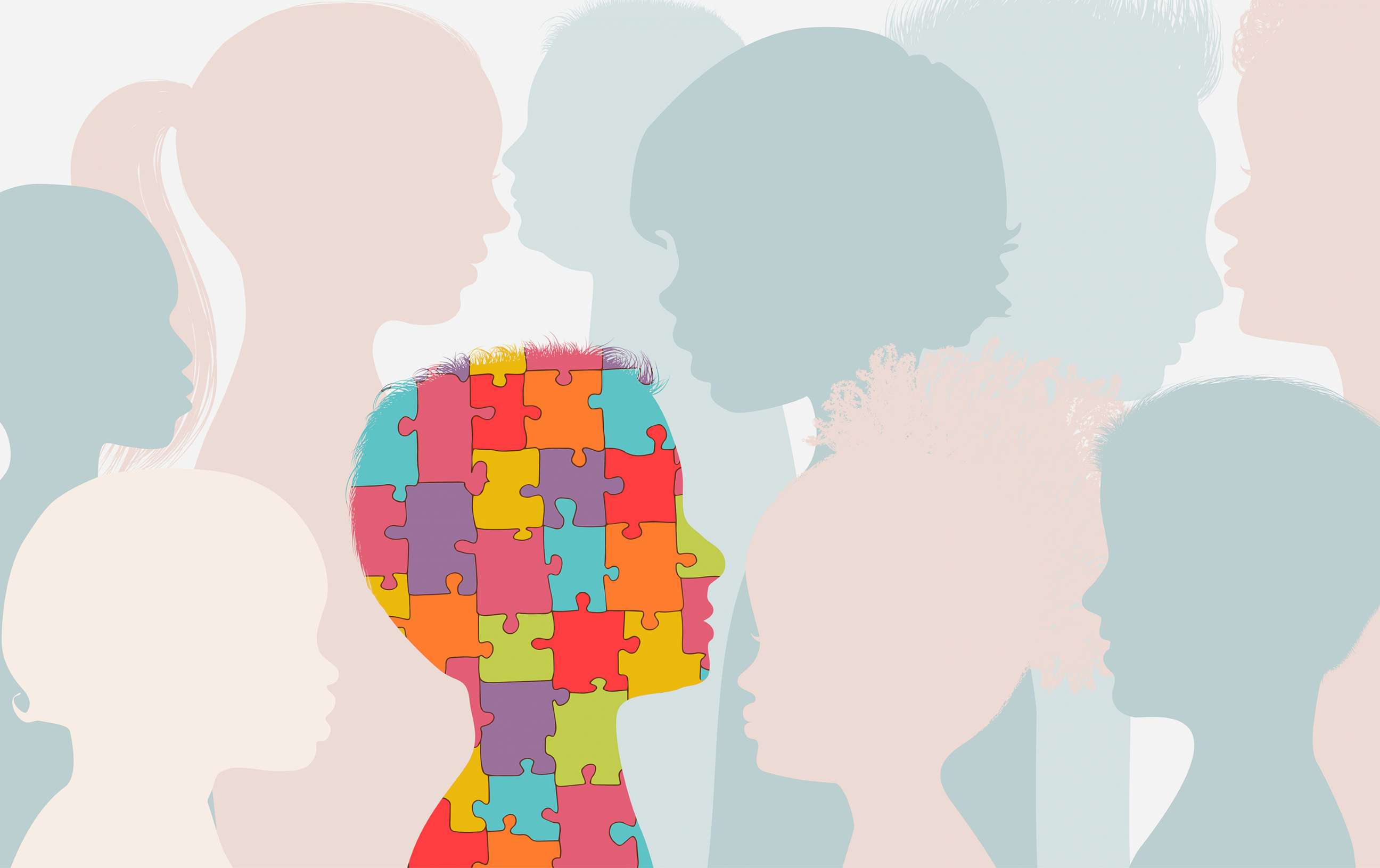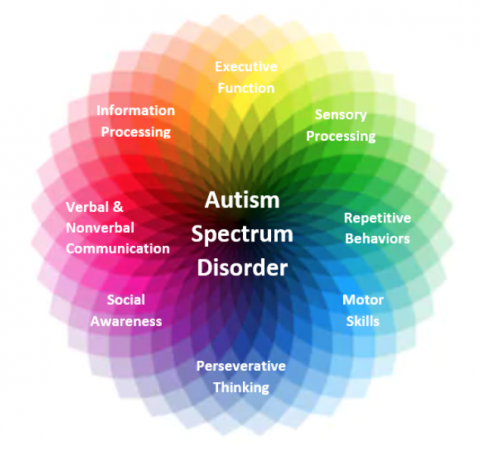Recognizing the Spectrum: A Comprehensive Overview to Autism Recognition
Recognizing the Spectrum: A Comprehensive Overview to Autism Recognition
Blog Article
Exploring Autism: Techniques for Reliable Interaction and Communication
Efficient interaction and communication with people on the autism range demand a comprehensive understanding of their special needs and choices. Approaches such as using clear language, making use of aesthetic assistances, and promoting consistent regimens can considerably improve interaction and decrease anxiousness. Acknowledging the importance of non-verbal signs and shared rate of interests paves the way for meaningful links. The complexities of these techniques reveal additional considerations that warrant expedition, especially in how they can be adjusted to individual experiences and diverse contexts. What might these adjustments look like in technique?
Understanding Autism Range Problem
Autism Spectrum Problem (ASD) encompasses a series of neurodevelopmental conditions defined by obstacles in social interaction, interaction, and recurring behaviors. The term "spectrum" shows the varied manifestations and varying levels of severity experienced by individuals with ASD. While some may show significant disabilities, others might display high-functioning qualities, enabling better freedom in day-to-day live.
The beginning of ASD commonly occurs in early youth, with indicators often identifiable by age 2. Very early indicators may include postponed speech growth, minimal eye call, and difficulties in understanding social hints. The precise etiology of ASD remains unclear, research recommends a combination of hereditary and ecological aspects plays a critical duty in its advancement.
As a result, treatments and support tailored to specific needs are essential for cultivating communication and social abilities. Acknowledging the complexity of ASD is crucial for promoting recognition, acceptance, and efficient approaches that promote significant communications with individuals on the range.

Significance of Clear Communication
Effective communication is crucial for promoting understanding and connection, particularly for people with Autism Range Disorder (ASD) Clear communication not just assists in social interactions but additionally improves the individual's ability to share their feelings, thoughts, and requirements. For people with ASD, the subtleties of language can usually be challenging; for that reason, making use of simple and distinct language is essential.
Moreover, clear interaction helps in reducing irritation and anxiety that might develop from misconceptions. When messages are shared in a direct and constant fashion, people with ASD are much better equipped to interpret information precisely, which can significantly improve their social engagement and involvement in numerous settings.
Developing regimens and using aesthetic assistances can even more strengthen clear communication. These methods give individuals with foreseeable structures that aid comprehension and retention of info. In addition, actively listening and being person during interactions advertises a helpful setting where people with ASD feel valued and recognized.
Inevitably, focusing on clear communication not just equips individuals with ASD yet likewise fosters more significant links with their peers, caretakers, and the broader area, leading the way for inclusive interactions and collaborative connections. - autism
Non-Verbal Interaction Methods
Interaction prolongs past words, and for individuals with Autism Spectrum Disorder (ASD), non-verbal cues play a significant duty in interactions. Non-verbal communication techniques can include faces, motions, body language, and eye call, every one of which function as crucial parts for sharing feelings and intents.
Recognizing and analyzing these non-verbal signals can improve interactions with individuals with ASD. For example, a cozy smile or open position can develop a welcoming ambience, urging engagement. Making use of visual aids-- such as image cards or signs-- can link interaction gaps and help communicate messages extra effectively.
It is likewise crucial to be conscious of personal room, as people with ASD may have different comfort levels regarding closeness. Observing their reactions to physical distance can notify proper changes.

Developing Helpful Settings
Producing an encouraging setting is important for cultivating favorable interactions and boosting the health of individuals with Autism Spectrum Problem (ASD) Such atmospheres can considerably reduce anxiousness and create a feeling of security, permitting people to express themselves a lot more freely.
To attain this, it is necessary to consider sensory level of sensitivities that individuals with ASD might experience. Changing the physical area to consist of soft illumination, marginal background sound, and comfortable seating can develop a soothing environment. Additionally, utilizing regular routines and clear aesthetic schedules can assist people anticipate transitions and minimize unpredictability, further promoting convenience.
Social rooms ought to be structured to decrease overwhelming stimuli while offering possibilities for engagement in Find Out More favored tasks. Facilitating areas designated for quiet time can also function as a haven during moments of anxiety. Notably, including aspects of my company option equips individuals, enabling them to work out firm in their environment.

Urging Social Communications
Fostering social communications among people with Autism Spectrum Condition (ASD) calls for willful techniques that focus on convenience and engagement. Developing predictable regimens can help decrease anxiety, making social settings more friendly. Creating organized atmospheres with specified roles and obligations enables people to involve without the frustrating stress of unstructured social dynamics.
Integrating passions and strengths into social tasks can offer as a catalyst for interaction. Arranging team tasks around shared leisure activities or topics of fascination can help with natural conversations and links. Additionally, utilizing aesthetic assistances, such as pictorial schedules or social scripts, can aid in understanding social cues and expectations.
Modeling appropriate social habits is important - autism. Peers and adults must show reliable interaction strategies, consisting of energetic listening and turn-taking. Role-playing circumstances can also give a secure area for people to exercise these abilities
Last but not least, promoting peer connections through inclusive methods is necessary. Urging comprehensive playdates or team trips can produce chances for socialization in a comfy setup. By implementing these strategies, caregivers and educators visite site can substantially improve social communications for individuals with ASD, advertising their overall social development and health.
Conclusion
In final thought, efficient communication and interaction approaches are vital for sustaining people with Autism Range Problem. Ultimately, these methods empower individuals with autism to navigate social landscapes, advertising their total well-being and allowing the advancement of long-term partnerships.
Effective interaction and communication with people on the autism spectrum require a thorough understanding of their one-of-a-kind needs and choices. Clear interaction not just promotes social interactions but also enhances the person's ability to share their requirements, feelings, and ideas.Cultivating social interactions among individuals with Autism Spectrum Disorder (ASD) requires willful strategies that focus on comfort and involvement. By implementing these techniques, educators and caretakers can substantially boost social interactions for people with ASD, advertising their total social development and well-being.
In conclusion, effective interaction and communication techniques are vital for sustaining individuals with Autism Spectrum Problem.
Report this page